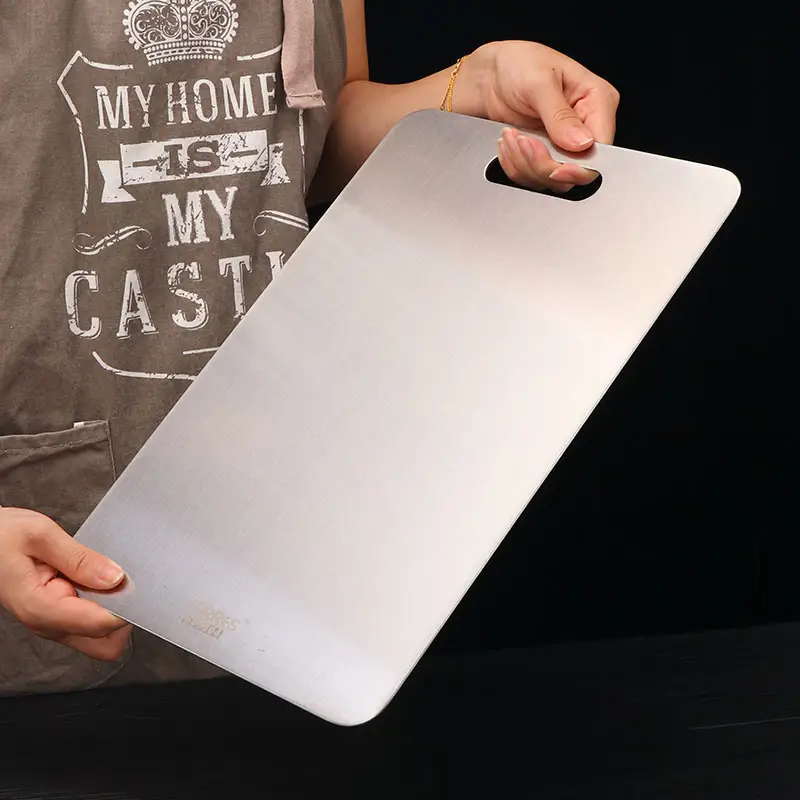Choosing the right cutting board material is a crucial decision for any kitchen. Marble, with its unique properties, is just one option among several materials available. Let’s compare marble with other common cutting board materials to help you make an informed decision based on your preferences and needs.
- Marble:
- Advantages:
- Aesthetic Appeal: Marble cutting boards are prized for their luxurious appearance and unique veining patterns, adding elegance to any kitchen.
- Cool Surface: The natural coolness of marble makes it suitable for working with temperature-sensitive ingredients like dough and chocolate.
- Durability: While not as hard as some other materials, marble is durable and can withstand regular use when properly cared for.
- Hygienic: Marble is non-porous, making it resistant to bacteria and easy to clean.
- Considerations:
- Softness: Marble is softer than some other materials, making it susceptible to scratches and dents.
- Weight: Marble cutting boards can be heavy, which may impact portability and handling.
- Potential for Chipping: In high-impact situations, marble may chip or crack.
- Advantages:
- Wood:
- Advantages:
- Knife-Friendly: Wooden cutting boards are gentle on knife edges, reducing the likelihood of dulling.
- Natural Antibacterial Properties: Some types of wood, like bamboo, possess natural antibacterial properties.
- Aesthetically Pleasing: Wood cutting boards have a warm and natural aesthetic.
- Considerations:
- Maintenance: Wood requires regular oiling to prevent drying and cracking.
- Absorption: Wood is porous and can absorb liquids, leading to potential staining and odor retention.
- Durability: While durable, wood may show signs of wear over time.
- Advantages:
- Plastic:
- Advantages:
- Affordability: Plastic cutting boards are often more budget-friendly than other materials.
- Lightweight: Plastic boards are lightweight and easy to handle.
- Dishwasher Safe: Many plastic boards are dishwasher safe for easy cleaning.
- Considerations:
- Knife Wear: Plastic boards can cause faster knife wear compared to softer materials.
- Durability: Plastic may develop scratches and cut marks over time.
- Staining: Plastic boards can stain, especially when exposed to strongly colored or aromatic foods.
- Advantages:
- Bamboo:
- Advantages:
- Sustainability: Bamboo is a rapidly renewable resource, making it an eco-friendly option.
- Lightweight: Bamboo cutting boards are lightweight and easy to maneuver.
- Antibacterial Properties: Bamboo possesses natural antibacterial properties.
- Considerations:
- Maintenance: Similar to wood, bamboo requires regular oiling.
- Durability: While durable, bamboo may not be as hard as some other materials.
- Absorption: Like wood, bamboo can absorb liquids.
- Advantages:
- Glass:
- Advantages:
- Hygienic: Glass is non-porous and easy to clean, offering good hygiene.
- Resistant to Staining: Glass is resistant to staining and odors.
- Durability: Glass cutting boards are resistant to scratches and wear.
- Considerations:
- Hard on Knives: Glass can be hard on knife edges, leading to faster wear.
- Weight: Glass cutting boards can be heavy.
- Limited Aesthetics: The aesthetic appeal may be considered less warm compared to other materials.
- Advantages:
Conclusion: Choosing the right cutting board material depends on your personal preferences, cooking habits, and aesthetic considerations. While marble cutting boards offer a luxurious appearance and unique advantages, each material comes with its own set of pros and cons. Consider your priorities in terms of aesthetics, maintenance, durability, and knife-friendliness to find the cutting board that best suits your needs.



